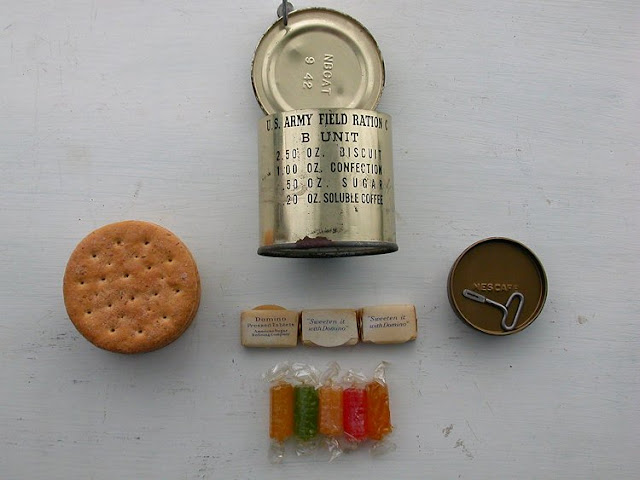Aug 28th
RAIN RAIN and mud
Lu from his memoirs: We settled into a routine of extending and improving our control surveys and existing on "K" and "C" rations and sleeping in soggy pup tents. There was lots of rain and mud and finding ways to improve living conditions was a constant challenge. As Cliff pointed out in his book, we had some talented buddies with inventive minds. Tom Fourshes, of Cadiz, Kentucky built a compact, wood fired cooking stove on which we could heat our rations, spread hot cheese on crackers, and boil eggs obtained from farmers. We found straw and dry grass to put under our bed rolls, but we never found a way to keep the water our of our fox holes. We didn't have too much incoming artillery, but I noted on August 26 'Priebe hits fox hole as I leave it going for mine as shells land in river'
We also began a close relationship with our Field Artillery gun battalions. The 561st next to us were equipped with "155 Long Toms" which I think was the best gun in WWII. We got to know how they sounded from the side, from the back and from the front, from near and from far. Once in awhile a band would tear loose from the shell as it traveled making a very distinctive noise as it whirled in a crazy pattern. In a way they were a real comfort to us because we could tell from the sounds where we were in relation to the enemy. we were most often in front of them and the shells passing overhead or to one side pointed where the targets were. The impact explosions confirmed that the front lines were somewhere in between.
Cliff, from his book: .I wrote a five page letter (to my parents) summarizing my present life in the army by telling about pitching pup tents in any convenient cow pasture. Except for being rained out a couple of times, it was fairly comfortable. Four blankets were none too many on most nights. Our standard diet consisted of K and C rations. The K-ration, which came in three Cracker Jack size boxes, provided something more than 3,000 calories a day and contained a can for each meal. (meat, meat and eggs, processed cheese) plus biscuits, crackers, dextrose, soluble coffee, fruit and chocolate bars, and lemon juice. The C-ration provided more calories but it was bulkier because it consisted of cans. The canned meals were better when heated but that wasn't always possible. It wasn't unusual to eat them cold from the can. occasionally we got 10-in-1 (U-Ration) which provided a day's supply of food for 10 men. we supplemented these rations with anything we managed to pick up from the countryside. I made a point of mentioning that while I hadn't had a shower since we landed, a few creeks had provided reasonable substitutes.
Unlike me, there were some men in our outfit who were adept at nearly everything. Tom Fourshee of Cadiz, Kentucky was one of them. He built a small wood-fired cooking stove on which we heated our rations and boiled fresh eggs. Tom could fix almost anything and so could 'Okie' Henderson from Texas. I came to appreciate their skills in the fundamentals of living in the field and also their even approach to whatever came up in the army.
For a look at the types of K-rations produced during WWII





There is a guy on YouTube that finds and eats old rations. Really quite interesting , here is his C ration vid
ReplyDeletehttps://youtu.be/hm8f5Kj_CrY
This comment has been removed by the author.
ReplyDeleteK ration
ReplyDeletehttps://youtu.be/vz5Y2Zg5w84
Thanks, very interesting!
Delete